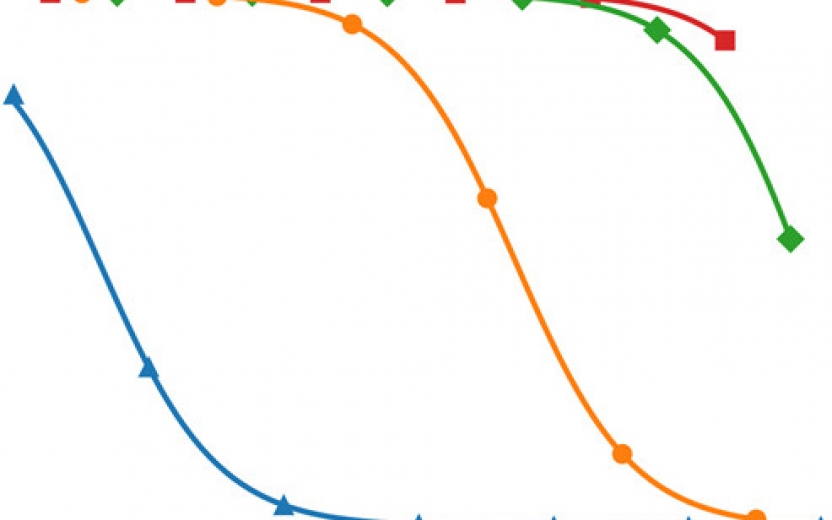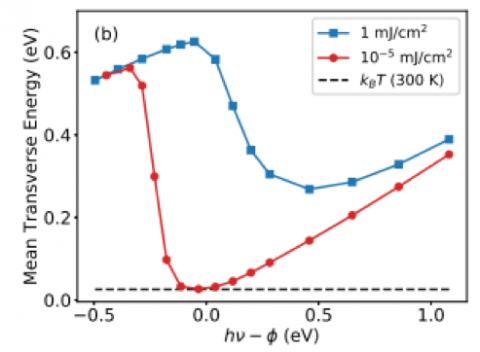Heating and multi photon emission in metal photocathodes
Bae, Bazarov, Musumeci, Karkare, Padmore, and Maxson
The mean transverse energy (MTE) of photoemitted electrons limits the beam brightness in most electron beam applications. CBB researchers have investigated how intense femto-second laser pulses cause femto-second scale heating and multi-photon emission of electrons resulting in increased MTE in metal photocathodes.
At low laser fluence (red curve), the MTE is near-zero at the photoemission threshold (hnu-phi = 0), reflecting the near zero energy of the ejected electron, and rises linearly for larger laser energies. Photoemission can take place below threshold through rare two photon processes, resulting in large MTE. At high laser fluence (blue curve), two photon processes lead to high emission rates even below threshold, and thermal heating of the electrons, which occurs within picoseconds, leads to large MTE even at the photoemission threshold.


